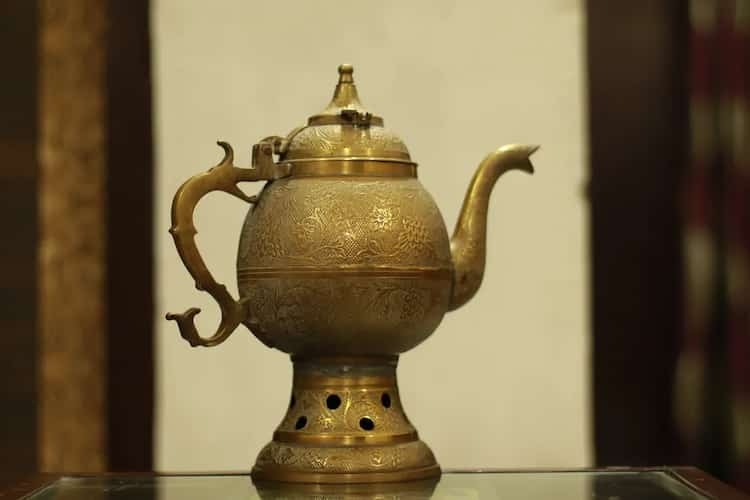When the Mughal emperor Jahangir visited Kashmir in the 17th century, he said, "Gar firdaus, ruhe zamin ast, hamin asto, hamin asto, hamin ast." He, who witnessed it immediately equated the scene with heaven since it was so breathtakingly beautiful. Kashmiris enjoy a drink that has the power to instantly transport you to heaven, much like the splendour of their homeland. The beverage is none other than locals' favourite Kahwa. The benefits of a soothing beverage are unparalleled; every one of us have a favourite drink that we turn to when we need to rest during the day, and the market's large selection of coffee and tea options gives us the chance to discover our own personal cup of tranquilly. With a smell that instantly relaxes and comforts you and is referred to as a "magic tea," a cup of the well-loved Kashmiri Kahwa can revive you unlike anything else.
Green tea leaves, Kashmiri saffron, cinnamon bark, cardamom pods, almonds, and rose petals are all combined to brew kahwa. And what's the finest part? Kahwa can be made in a variety of ways. By including various kinds of dry fruits, the brew can be crafted in various ways. Some individuals prefer their coffee with added ingredients such dried cherries, apples, apricots, and raisins, or with pine nuts, pistachios, almonds, cashew nuts, dates, etc. These extra components give the beverage a deeper flavour and more appetising undertones in addition to improving its texture.

History
Let's examine Kahwa's history. Why is it so popular among people in Bangladesh, Afghanistan, and other parts of Central Asia in addition to Kashmiris? It's interesting to note that the word "kahwa," which also goes by the name Arabic kahwa, is Arabic in origin.
As we go further back in time, we learn that Kashmiris used to travel to Tibet to receive their special teas from China. Although some claim that it was created in the Yarkand valley under the Kushan empire in the first and second centuries AD, it is generally accepted that Kahwa tea leaves arrived in Kashmir via the infamous Spice Route. Even though historians disagree on its exact beginnings, Kahwa has become Kashmir's national drink and is frequently referred to as the "miracle tea. Isn't it logical that heaven on earth is where magic tea is found?
In Kashmir, the day usually starts with a cup of kahwa tea. It's the ideal beverage for a place with a bitter cold since it will keep the locals toasty and warm. Additionally, it is incredibly healthful due to the fact that it mostly consists of fruits, nuts, and spices in a green tea base. Other health advantages of Kashmiri Kahwa tea include: It enhances focus and alleviates stress-related problems.
It contains digestive qualities and functions as a fat burner.
Your body uses it as an antioxidant.
It can ease migraines and headaches.
It keeps the fluid balance in your body in check.
It is great for eyesight.
It might revitalise you and aid in your battle against fatigue.
Even the process of manufacturing kahwa has its own fascination and distinctiveness. It is traditionally prepared in a "Samovar," a brass or copper kettle with a central chamber used for burning coals. There is room left in the container for the ingredients to warm up, and a nozzle is present to pour the tea. The typical cup used to sip tea is made of bronze, while some people also prefer china clay cups.


